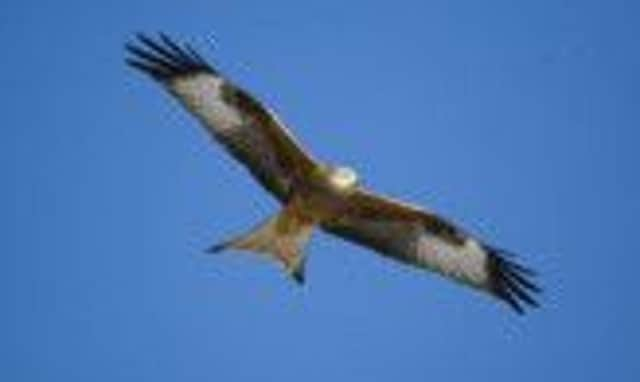Red Kites to be tagged and file ‘blogs’


Data sent from the satellite-tagged raptors is allowing sophisticated computer programmes to write the story of their lives – through daily and weekly blogs of where they go and why they explore the landscape around them.
The Blogging Birds project is part of a collaboration between computer and environmental scientists at Aberdeen University and conservationists at the RSPB.
Advertisement
Hide AdAdvertisement
Hide AdThe four kites - named Wyvis, Moray, Millie and Ussie - have been fitted with satellite tags that relay their positions up to six times a day. This information is enriched with information on weather, habitat and landscape to build a detailed picture of the birds’ movements and home ranges.
A pioneering computer programming called “Natural Language Generation” then allows computers to generate written language from this information, in the form of a blog post about the red kite without human help. Dr René van der Wal from Aberdeen University’s dot.rural Digital Economy Hub and the School of Biological Sciences explained: “Using cutting edge computing technology, red kites will tell you a story about their day-to-day lives – without any help from humans! Keep coming back and you’ll see new stories every day and every week about the lives of our red kites as they gradually make their come back into the Highlands of Scotland. We hope many people will visit and give feedback about the Blogging Birds Site.”
Stuart Benn, from RSPB North Scotland, said: “It’s been really fascinating working on this project. We know that people are becoming more disconnected from nature and we’re trying really hard to turn that around. We have to look at all ways of bringing people and nature back together and digital technology is an increasingly important means of doing that as it is the way that so much of the world operates. This project breaks new ground for both bird and computer fans.”
A university spokesman said: “Whilst humans will always be better than computers at writing blogs that evoke emotions and feelings but computers are able to gather huge amounts of data instantaneously, make connections and incorporate it all into a readable form. Rather than detract from what humans currently do in this field, the computer information can add to it.”
He added: “Although the technology is being used to write blogs about red kites just now the approach has much wider applications. For example, it allows for the creation of texts of any length and complexity based on gathering data from a wide range of sources, with applications throughout society and business.”
Red kites were almost wiped out by being poisoned and shot by gamekeepers during the reign of Queen Victoria, leaving only a tiny population in a remote part of North Wales by the beginning of the 20th century.
But a dedicated reintroduction programme started in 1989 when red kites from Sweden were introduced in the Black Isle and the Chilterns in England. There are now an estimated 2000 breeding pairs throughout the UK.
The Scottish population is centred around the release sites in Dumfries and Galloway, Stirling-shire and west Perthshire, around Black Isle in Ross-shire, and on the outskirts of Aberdeen City. Kites have also now been returned to Northern Ireland. But the red kite remains on the Amber List species because of its historical decline.